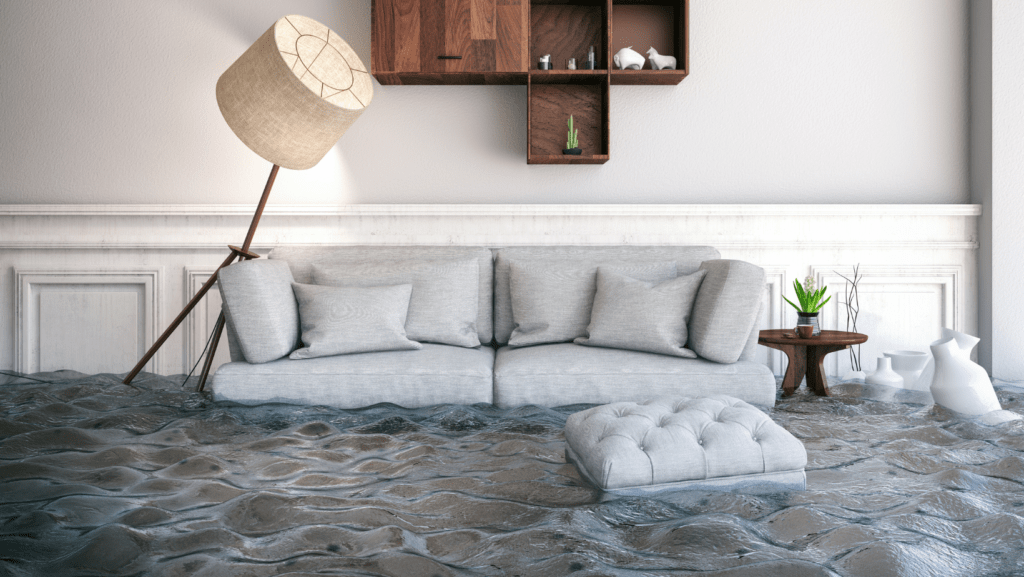
Hurricanes are unpredictable, ferocious natural disasters that can wreak havoc on coastal communities. The peak of hurricane season is from mid-August to mid-October, and while major hurricanes have struck the Atlantic coast in September, they may occur at any time of the year. A hurricane can cause a variety of different types of damage to your home and property. As with any natural disaster, preparation is the key to keeping your property safe from storm damage. These 5 common types of hurricane damage and how you can prepare for them.
Roof and Wall Hurricane Damage
Hurricanes can cause many types of roof damage, including shingles being torn off, the metal roof being lifted off, and the roof structure collapsing. Structural damage to your roof can lead to severe water and structural damage inside your home. The best way to prevent roof damage is to make sure that your roof is in good shape before the hurricane hits. If you have any loose or missing shingles, nail them back down. If you have a metal roof, make sure the screws are secure. You may want to secure it with hurricane straps, as well. The best way to prevent water damage caused by roof damage is to make sure that you have an emergency supply kit with items such as a tarp, a shovel, and sandbags.
Flooding

Hurricanes typically cause flooding, which can damage your property and leave behind hazardous mold and bacteria that can cause illness. Flooding may occur if the storm surge pushes water from the ocean into the land, or if heavy rain causes flooding in rivers and lakes. To reduce the risk of flooding, you can take a few precautions such as installing flood alarms and flood shutters and building your property up above the flood line. If you live near a body of water, make sure you clear away any debris that could clog the drainage system.
Tree Damage
Trees may be toppled by strong winds during a hurricane, and they may damage your roof, walls, and property if they fall the wrong way. The best way to prevent tree damage is to plant trees that are resistant to strong winds such as cypress, palms, and eucalyptus trees, and to maintain your trees. Make sure that your trees are pruned, and any vines or branches are trimmed back. Once a hurricane is approaching, make sure to clear any branches and vines from your trees. You may also want to place netting over your trees or plant them in pots to protect them from heavy wind.
Structural Hurricane Damage
Hurricanes may cause structural damage to your home if the building is not built correctly or if it is not maintained properly. Structural damage can happen in many ways, including the roof or walls collapsing, water damage causing the foundation to deteriorate, and flooding causing damage to the electrical system. The best way to prevent structural damage is to make sure your home is built correctly and that you maintain it regularly. Make sure that your home has strong, sturdy walls and a solid foundation. Make sure your roof is installed correctly and that your electrical system has been inspected by a professional. Once a hurricane is approaching, make sure all loose items are secured. You may also want to consider boarding up your windows if you live in a particularly vulnerable area.
Windows and Doors
Windows and doors are the first line of defense against hurricanes. If the windows and doors are not well-sealed, water may enter your home and cause damage. The best way to prevent storm damage to your windows and doors is to make sure they are installed correctly and maintained regularly. Make sure your windows have strong locks and that your doors are made of strong materials, such as metal. Once a hurricane is approaching, make sure your windows and doors are secure. You may also want to consider boarding up your windows with plywood or storm shutters if they are not stormproof.
Conclusion
Hurricanes are unpredictable, ferocious natural disasters that can wreak havoc on coastal communities. If you and your family suffer severe storm damage of any kind, contact your local Steamatic branch, today.



